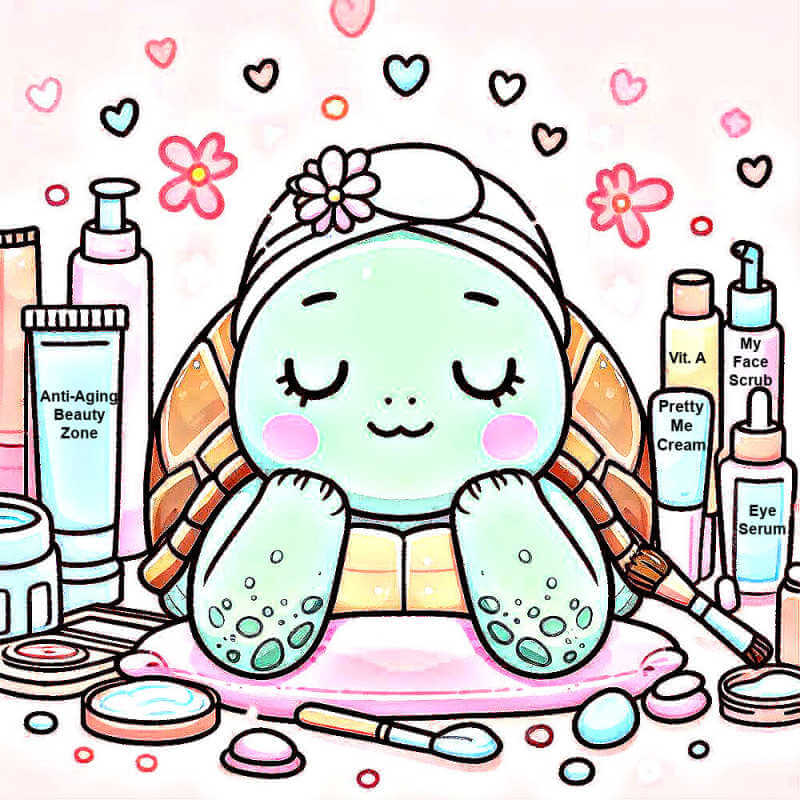As an Amazon Associate, I earn from qualifying purchases and other affiliate links. I only recommend products I’ve tried or researched.
- Home
- Skincare Guide
- Exfoliation Guide
- Dermaplaning vs Micro
Dermaplaning vs Microdermabrasion
What's the difference, which is better, can you do them both, and how long results last?
Dermaplaning vs Microdermabrasion: Both are effective exfoliating, anti-aging treatments to help reduce the appearance of fine lines and smooth and rejuvenate the skin.
And both can be used as part of a healthy skin care routine. We'll explain how they work, and what's the difference between the two ...
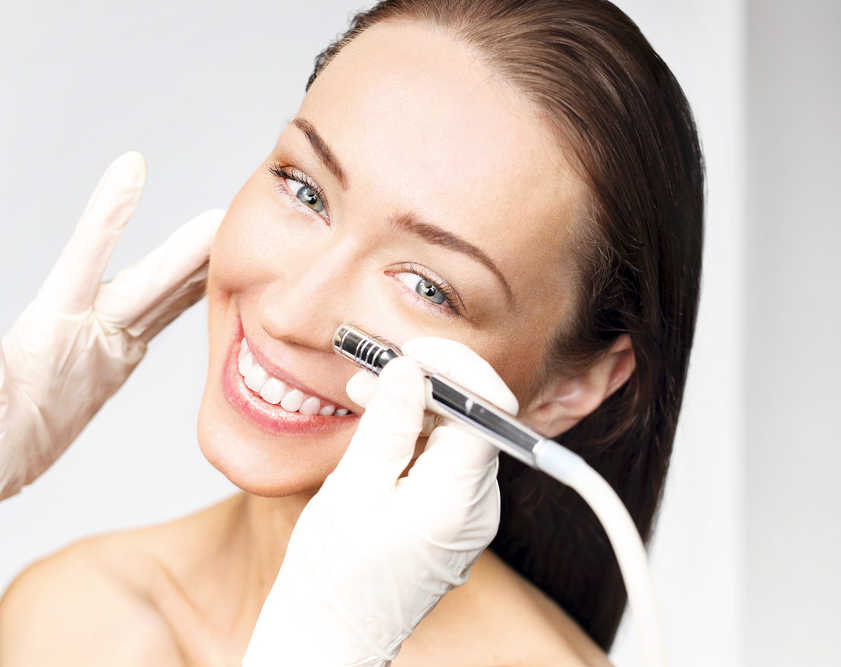
The skin benefits greatly from an exfoliation procedure, particularly on our faces.
Exfoliation gives your complexion a radiant appearance, clears clogged pores, supports collagen production, and boosts better product penetration and effectiveness of skincare products.
Establishing a regular exfoliation routine is a must for women over 40 as it results in glowing, healthy skin and fights against sagging and wrinkles.
The difference is in the technique
Both dermaplaning and microdermabrasion both exfoliate, but they use different techniques to accomplish these goals.
Dermaplaning is similar to "skin shaving." During a session, a skincare professional uses a medical blade positioned at an angle to scrape off dead skin cells and short hairs, known as peach fuzz. That's why, dermaplaning is sometimes called "blading" or "microplaning."
On the other hand, microdermabrasion, uses a special hand-held wand that rubs or sandblasts, while simultaneously suctioning away, dirt and dead cells.
The process for both is typically painless, though you might feel a slight tingling sensation. Both have the advantages of exfoliation, but each has extra advantages and may be better suited to different people with different skin concerns.
So which technique is best for you?
To help you decide which is best for you, let's compare dermaplaning with microdermabrasion and look at their benefits.
Dermaplaning vs Microdermabrasion: The benefits
Both dermaplaning and microdermabrasion offer great anti-aging benefits for your face.
And, if you have normal skin and are a good candidate for both exfoliating treatments, you shouldn't have to choose between, as both can be used at different times as part of an anti-aging skincare routine.
But it is important to know the difference between the two and their advantages and disadvantages.
Here is a quick breakdown of these two treatment options and how they work:
What does dermaplaning do
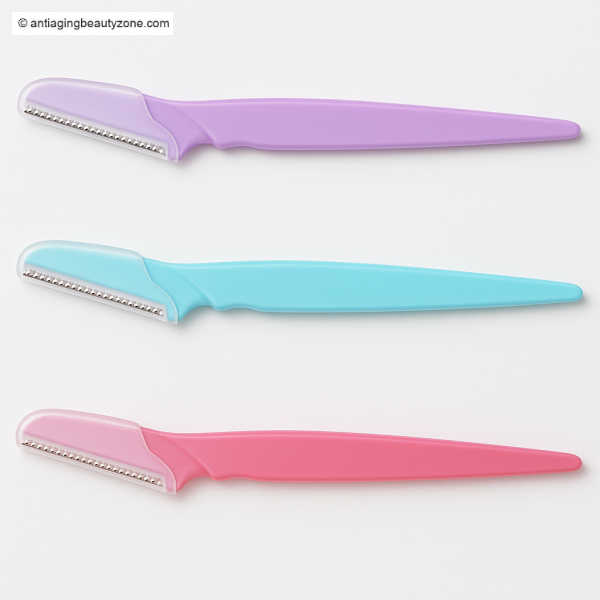
This non-invasive procedure uses a sterile blade to scrape (or shave) the top layer of your skin. This helps remove dead cells (which causes dull skin) oil, dirt, and facial hair.
There are many different dermaplaning blades on the market, but most are made of stainless steel with a 0.8mm micro tooth safety guard saw.
However, I have found that some seem sharper than others. The more expensive ones are not recommended for first timers because it's easier to cut yourself.
But once you've done it a few times, the sharper, more expensive is the way to go for best results.
Note: One of the main advantages of dermaplaning is how effectively it removes facial hair, include peach fuzz, which cast a dull look over the skin and prevents smooth makeup application.
And unlike facial waxing, the dermaplane blade easily removes the facial hair without any irritation or the mess of heating, applying, and removing wax.
You'd be surprised how much smoother and clean your face looks once you remove all of that extra peach fuzz that most women never notice.
Dermaplaning treatment is a perfect choice if you're looking for a quick way to perk-up your skin. Because it only takes minutes and there is no downtime or side-effects.
Except the possibility of a slight nick, for first time users who start with a very sharp blade.
It might be also be a better choice if you have very delicate skin, have recently had a chemical peel or other more aggressive facial treatment.
You can read about home dermaplaning and the different tools used here.
Good candidates for dermaplaning
All skin types, including those whose skin is reactive or retains redness, can benefit from dermaplaning. It will work best on dry or oily, mature skin, with excess facial hair or enlarged pores.
Since dermaplaning
removes excess hair, which traps excess oil and dirt, it can improve the
appearance of pores and skin texture.
Benefits of dermaplaning
The benefits of dermaplaning procedure include:
- It's a minimally invasive procedure that has no recovery time, with little side effects
- Helps removes Vellus hair (also known as peach fuzz or fine hairs) which definitely makes your skin look super smooth.
- Enhances skincare product absorption and makeup application since the surface of the skin is so smooth. Your makeup will melt into your complexion, instead of just sit on top.
Microdermabrasion: What is it?
Microdermabrasion is like a mini, mild sandblaster machine that glides across the skin to "blast" away dead skin cells.
This crystal microdermabrasion machine uses a rotating aluminum or diamond tip (sometimes called a disc). This dic gently peels away of the upper layer of the skin called the stratum corneum.
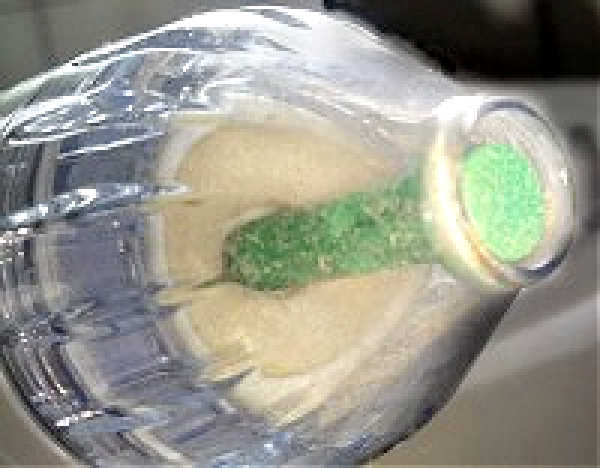 Close up picture of rotating microdermabrasion disc.
Close up picture of rotating microdermabrasion disc.An
in-office medical grade microdermabrasion machine usually also sprays a grainy,
salt like powder onto the skin, while the fast rotating disc polishes the
skin.
Microdermabrasion treatment is a more aggressive form of exfoliating, than dermaplaning, which may produce better results for younger-looking skin.
However, there is more of a chance of downtime (like 24 hours) and side-effects where you might experience redness, swelling, bruising type mark or tightness of the skin.
Benefits of microdermabrasion treatment
Benefits of microdermabrasion treatment include:
- help UV damaged and uneven skin tone (like dark spots or age spots)
- reduce fine lines, and wrinkles
- smooth acne scarring
- reduce visible pores
- soften deep lines with regular treatment
- professional treatment can help reduce melasma
Good candadates for microdermabrasion

For people with non-sensitive skin, microdermabrasion is a wonderful skin rejuvenating treatment. The process can be highly beneficial, but it might be painful for people with sensitive skin.
Microdermabrasion might be too abrasive if you have very sensitive skin that gets red easily or skin conditions like rosacea that causes redness. It might even exacerbate any current skin issues you might have.
You can read more about home microdermabrasion treatments here...
Dermaplaning or microdermabrasion: Which one is better?
Which One Is Better? Both exfoliating treatments have the potential to be very beneficial for your skin.
And if you don't have any pressing skin issues, there is no reason why you can alternate between both treatments for the great results.
However, your particular skin needs and concerns might limit your options. If your skin is super sensitive, then dermaplaning might be a better choice.
Can you dermaplane before microdermabrasion
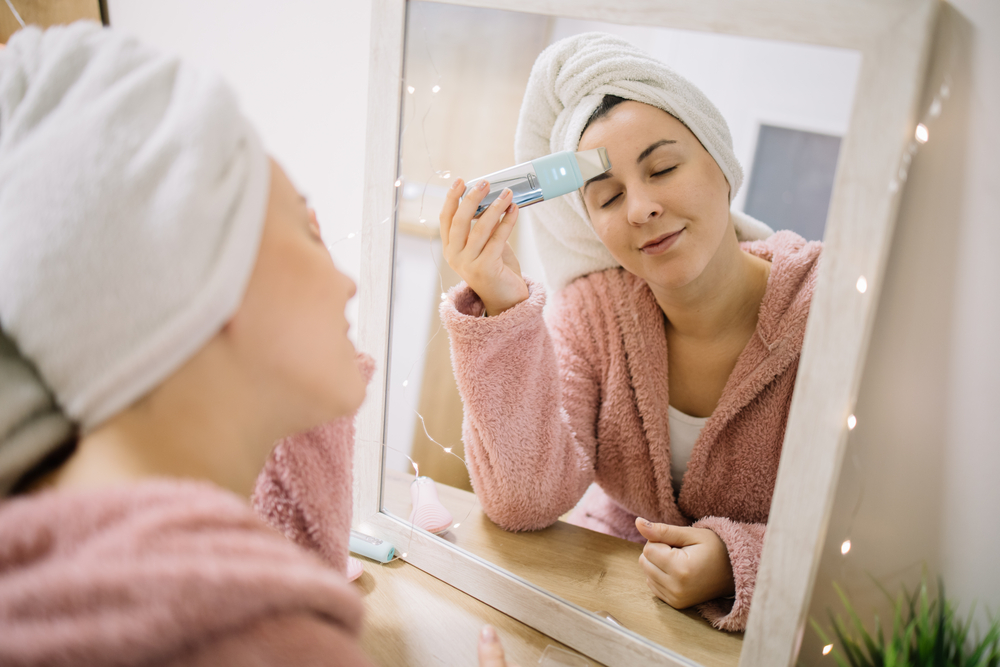
Can you have a dermaplaning treatment before or after microdermabrasion procedure?
If you're a good candidate, you can do both treatments, but it's advisable to wait a few weeks in-between each one to let your skin recover.
Let your skin's reaction be your guide. Just keep in mind that over-exfolating is not a good idea, especially for mature, aging skin.
Personally, I'd wait at least 2-3 weeks in-between each treatment.
Who should not use dermaplaning or microdermabrasion treatments?
Check with your aesthetician before proceeding with any in-office or at-home dermaplaning or microdermabrasion treatment if you have any skin issues:
- cold sores
- active or severe acne
- eczema
- psoriasis
- skin tags
- skin burns
- rashes
- dermatitis
FAQ's: dermaplaning vs microdermabrasion
Here is a list of some of the most common questions regarding these two exfoliating treatments.
Q: Can you reuse Dermaplane blades?
A: Yes, you can reuse the same dermaplane blade a few times before having to replace it. How will often depend on the quality of the blade. An inexpensive one (like those you can purchase at Target) can only be used about 2-3 times. Personally, I found a more expensive blade is sharper and can be used about 5-6 times. Just make sure to disinfect it with alcohol after each use.
Q: Can you dermaplane after microdermabrasion?
A: If you'e doing these non-invasive skin treatments at home, you should wait until your skin has fully recovered from microdermabrasion. However, if you opt for an in-office procedure, your dermatologists might advise differently. Leave that up to the professionals.
Q: How long do results last
A: Dermaplaning is temporary, just like microdermabrasion. Usually, the effects vanish after a few weeks. So, for optimal results, it's best to do a series of treatments a few times a month.
If you're a good candidate for both dermaplaning and microdermabrasion, you can switch off every few weeks. Try dermaplaning one or twice a month and microdermabrasion treatment once or twice the next month.
Q: Does microdermabrasion remove hair
A: No, dermaplaning does a fabulous job of removing facial hair and especially that hard to see and hard to remove peach fuzz.
Q: Does dermaplaning remove dark spots?
A: No, dermaplaning will not remove dark spots. Microdermabrasion can help to slightly lighten brown spots over time. And professional in-office dermabrasion treatments can help lighten them also. But nothing will remove dark spots as well as professional in-office laser treatments.
Q: What is dermabrasion?
A: Dermabrasion is a more aggressive form of microdermabrasion and is only done by a professional skincare expert. It removes not only mild wrinkles but scars too. There is significant downtime with dermabrasion, including bleeding, unlike with microdermabrasion, which has minimal side-effect and downtime.
Want More?
I share quick routines, beauty tweaks, and what’s working for me — straight to your inbox. Join the Club and get this free Cheek Shaper Video.
About the Author:
Linda Robison is a Facial Fitness Specialist and the founder of Anti-Aging Beauty Zone. With decades of hands-on experience, she shares practical, natural ways to lift and brighten mature skin—without expensive or invasive treatments.
Before you go ....
Please tap on the💙in the bottom right corner if you found this page helpful.
FOLLOW ME FOR MORE TIPS:
SHARE OR SAVE FOR LATER:





